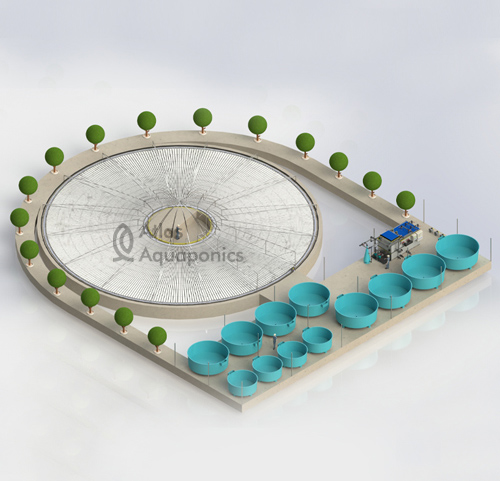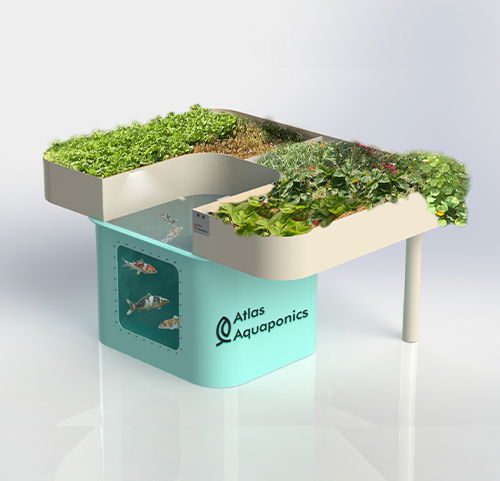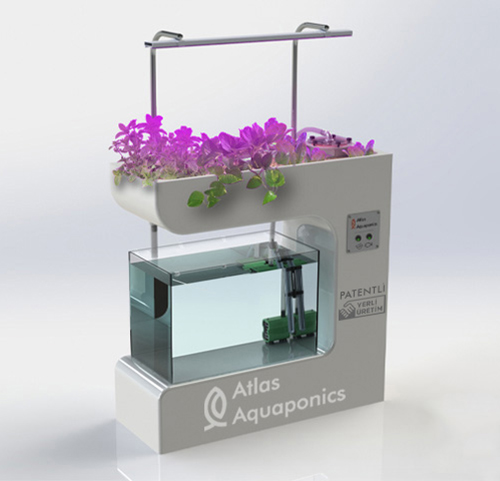Common Pests in Aquaponics and How to Manage Them
Aquaponics offers a sustainable and efficient way to grow plants and raise fish in a closed-loop system. However, like any form of agriculture, it is not immune to pests. Since aquaponic systems rely on a delicate balance between fish, plants, and beneficial bacteria, traditional chemical pesticides are not an option. Instead, aquaponic growers must use organic and eco-friendly methods to manage pests effectively.
In this guide, we’ll explore some of the most common pests in aquaponics, how they can impact your system, and the best natural strategies for keeping them under control.

Common Pests in Aquaponics
1. Aphids
Impact on Aquaponics: These tiny sap-sucking insects can quickly multiply and damage plant leaves by draining essential nutrients. Severe infestations can cause leaf yellowing, curling, and even plant death.
How to Manage Aphids:
- Introduce beneficial insects like ladybugs and lacewings, which are natural predators of aphids.
- Spray plants with a mixture of neem oil and water (ensure the oil does not drip into the fish tank).
- Use a strong jet of water to dislodge aphids from the leaves.
- Keep an eye on nitrogen levels—excess nitrogen encourages aphid infestations.
2. Whiteflies
Impact on Aquaponics: Whiteflies suck plant sap and weaken crops, leaving them susceptible to disease. They also excrete a sticky substance called honeydew, which promotes mold growth.
How to Manage Whiteflies:
- Hang yellow sticky traps around your aquaponic system to capture adult whiteflies.
- Introduce parasitic wasps that naturally control whitefly populations.
- Use a garlic or chili spray to repel them (apply carefully to avoid affecting fish).
- Maintain proper airflow, as whiteflies thrive in stagnant environments.
3. Spider Mites
Impact on Aquaponics: These microscopic arachnids feed on plant cells, causing yellowing, speckling, and overall plant stress. In severe cases, they can kill plants.
How to Manage Spider Mites:
- Increase humidity, as spider mites thrive in dry conditions.
- Spray leaves with a water and mild soap solution to break their protective webbing.
- Release predatory mites (Phytoseiulus persimilis) to keep spider mite populations under control.
- Avoid over-fertilizing, as high nitrogen attracts spider mites.
4. Thrips
Impact on Aquaponics: Thrips are tiny insects that pierce plant cells and feed on their contents. They leave silvery scars on leaves and can spread plant viruses.
How to Manage Thrips:
How Often Should You Test?
- Use blue sticky traps to catch adult thrips.
- Introduce natural predators such as pirate bugs and ladybugs.
- Apply neem oil or insecticidal soap to the affected plants.
- Maintain good plant spacing to reduce hiding spots.
5. Caterpillars and Leaf Miners
Impact on Aquaponics: Caterpillars chew through leaves, while leaf miners create tunnels inside leaves, weakening plant health.
How to Manage Caterpillars and Leaf Miners:
- Handpick caterpillars when spotted.
- Introduce Bacillus thuringiensis (Bt), a natural bacteria that targets caterpillars without harming fish.
- Use floating row covers to prevent adult moths from laying eggs.
- Remove affected leaves to reduce infestations.
6. Fungus Gnats
Impact on Aquaponics: These small flying insects lay eggs in moist growing media, and their larvae feed on plant roots, leading to stunted growth.
How to Manage Fungus Gnats:
- Let the growing media dry slightly between watering cycles to discourage egg-laying.
- Introduce beneficial nematodes that feed on gnat larvae.
- Place sand or gravel on the surface of the grow bed to deter egg-laying.
- Use yellow sticky traps to catch adult gnats.
Preventive Measures for Pest Control in Aquaponics
While pest outbreaks can happen, prevention is always the best approach. Here are some strategies to minimize pest problems:
1. Maintain a Balanced Ecosystem
A well-balanced aquaponic system with healthy fish, plants, and beneficial bacteria naturally resists pests. Avoid over-fertilizing, and keep nutrient levels in check to prevent attracting unwanted insects.
2. Use Companion Planting
Certain plants, like basil, marigold, and mint, naturally repel pests. Planting them alongside your main crops can help deter infestations.
3. Encourage Beneficial Insects
Introduce predatory insects such as ladybugs, lacewings, and parasitic wasps to help control pest populations naturally.
4. Inspect Regularly
Check your plants frequently for signs of pests. Early detection allows for quick intervention before a full-blown infestation occurs.
5. Avoid Monoculture
Growing a diverse range of plants reduces the chances of pest outbreaks. Pests that target one plant type will struggle to spread if other species are present.
6. Use Physical Barriers
Mesh covers, row covers, and netting can help keep pests away from your plants while allowing air circulation.
Conclusion
Managing pests in aquaponics requires a proactive, organic approach. Since chemical pesticides are not an option, integrating natural pest control methods like beneficial insects, companion planting, and physical barriers is crucial. By maintaining a balanced ecosystem and regularly monitoring your system, you can prevent and manage pest issues while keeping your aquaponic garden thriving.



